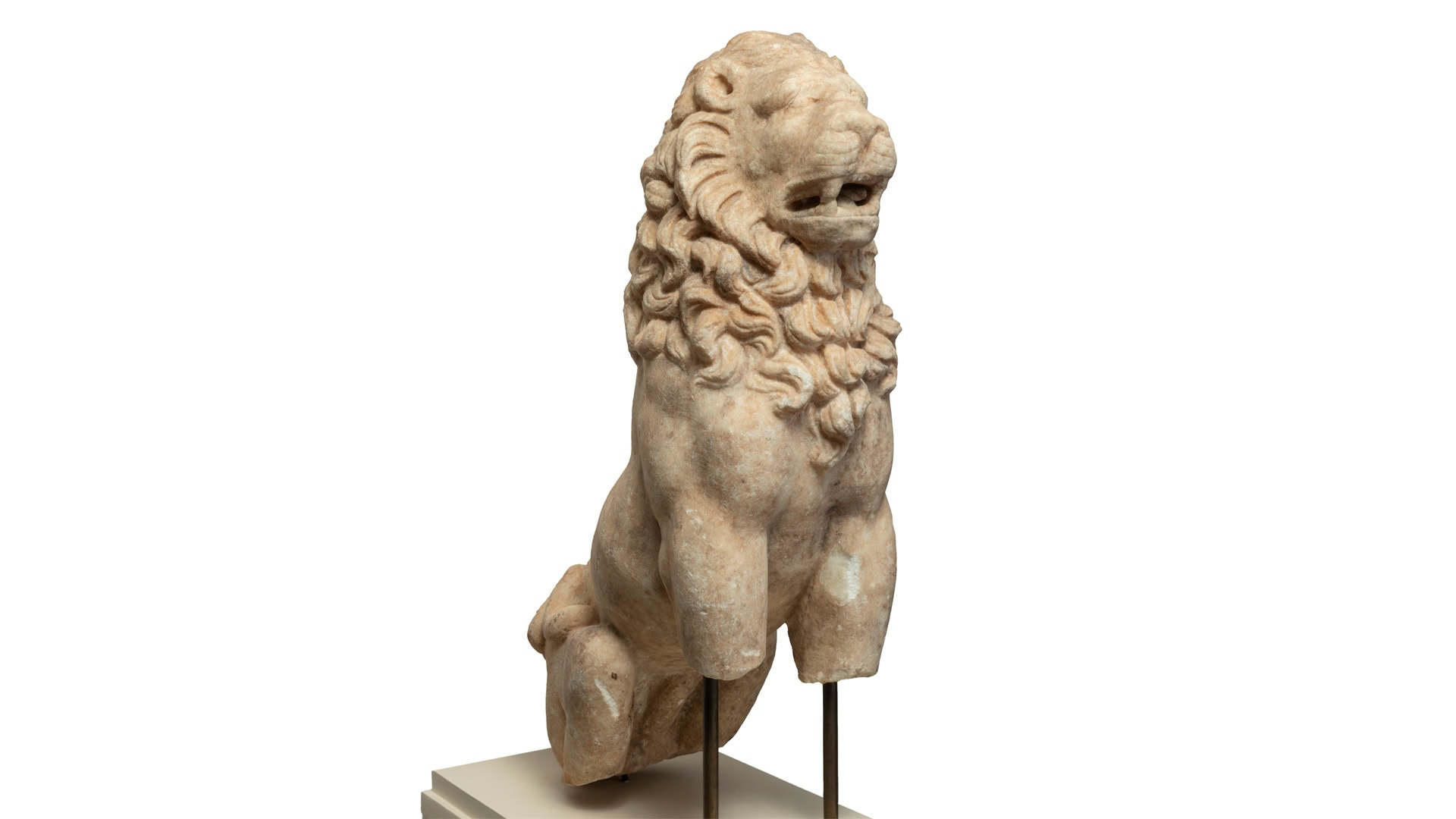Marble funerary statue of a lion

The section “Taking care of the deceased” opens with a characteristic artefact from the Paul and Alexandra Canellopoulos Museum. It is a marble seated lion. The proud animal, with its dense mane and half-open mouth revealing its sharp teeth, stares straight ahead – haughty and imposing, like a guardian standing over a tomb, recounting the role of the lion in the burial customs of Greek antiquity.
Statues of lions of monumental size were often placed as funerary markers in collective graves of warriors, in the so-called polyandria. One of the most impressive examples is the famous Lion of Chaeronea, which was erected over the Polyandrion of the Theban warriors of the Sacred Band, who fell at the battle of Chaeronea in 338 BC, facing the Macedonians led by Philip II.
This Canellopoulos lion, however, because of its small size, does not appear to have belonged to a polyandrion. It probably adorned the private tomb of an individual warrior. As a symbol of his bravery, the lion invited passers-by to stand respectfully before it as it guarded the final resting place of the brave man who passed away. It dates to 350 – 300 BC and is the work of a workshop not related to Athenian production.
Its form, skillfully carved in marble, reflects the importance ancient Greeks attached to the care of their dead.
The sculpture was presented at the Museum of Cycladic Art for the first time during the temporary archaeological exhibition “Chaeronea 2 August 338 BC: A day that changed the world” in 2023 – 2024 and is a long-term loan from the Paul and Alexandra Canellopoulos Museum.